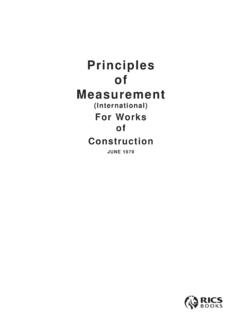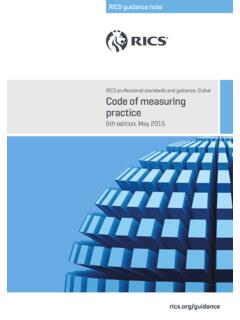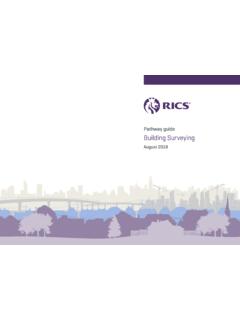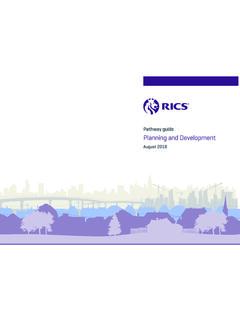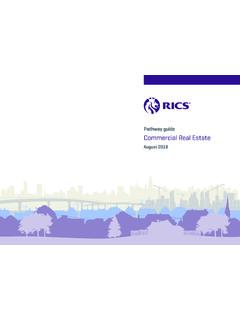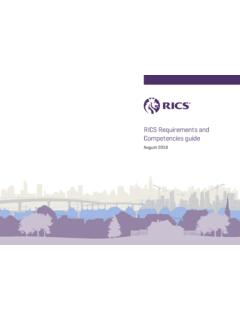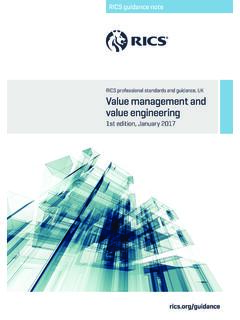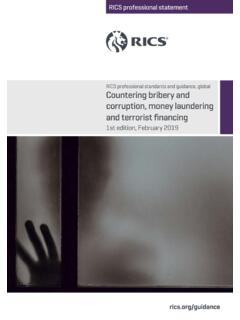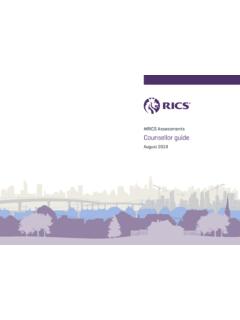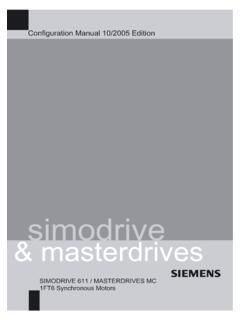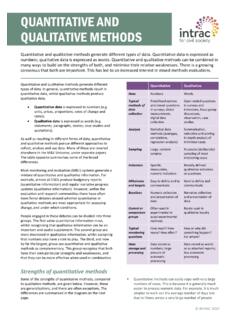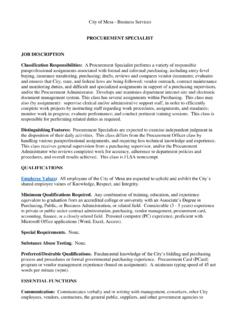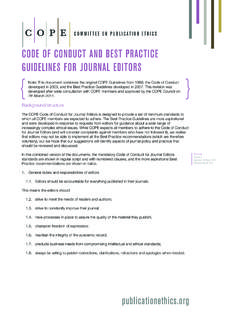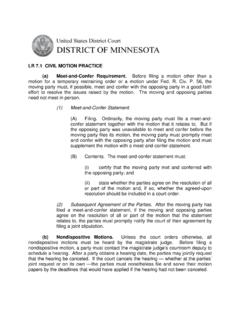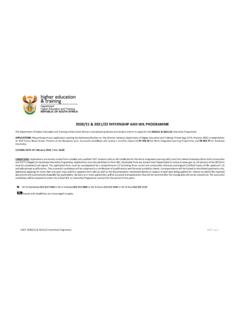Transcription of Description of the RICS Home Survey Level 2 (survey only)
1 Description of the rics home Survey Level 2 ( Survey only ) The service The rics home Survey Level 2 ( Survey only ) service includes: a physical inspection of the property (see The inspection below) and a r e port based on the inspection (see The report below). The surveyor who provides the rics home Survey Level 2 ( Survey only ) service aims to give you professional advice to: make an informed decision on whether to go ahead with buying the property take into account any repairs or replacements the property needs, and consider what further advice you should take before committing to purchasing the property.
2 Any extra services provided that are not covered by the terms and conditions of this service must be covered by a separate contract. The inspection The surveyor inspects the inside and outside of the main building and all permanent outbuildings, recording the construction and significant visible defects that are evident. This inspection is intended to cover as much of the property as is physically accessible. Where this is not possible, an explanation is provided in the Limitations on the inspection box in the relevant section of the report.
3 The surveyor does not force or open up the fabric of the building. This includes taking up fitted carpets, fitted floor coverings or floorboards; moving heavy furniture; removing the contents of cupboards, roof spaces, etc.; removing secured panels and/or hatches; or undoing electrical fittings. If necessary, the surveyor carries out parts of the inspection when standing at ground Level , from adjoining public property where accessible. This means the extent of the inspection will depend on a range of individual circumstances at the time of inspection, and the surveyor judges each case on an individual basis.
4 The surveyor uses equipment such as a damp meter, binoculars and torch, and uses a ladder for flat roofs and for hatches no more than 3m above Level ground (outside) or floor surfaces (inside) if it is safe to do so. If it is safe and reasonable to do so, the surveyor will enter the roof space and visually inspect the roof structure with attention paid to those parts vulnerable to deterioration and damage. Although the surveyor does not move or lift insulation material, stored goods or other contents.
5 The surveyor also carries out a desk-top study and makes oral enquiries for information about matters affecting the property. Services to the property Services are generally hidden within the construction of the property. This means that only the visible parts of the available services can be inspected, and the surveyor does not carry out specialist tests. The visual inspection cannot assess the efficiency or safety of electrical, gas or other energy sources. It also does not investigate the plumbing, heating or drainage installations (or whether they meet current regulations); or the internal condition of any chimney, boiler or other flue.
6 Outside the property The surveyor inspects the condition of boundary walls, fences, permanent outbuildings and areas in common (shared) use. To inspect these areas, the surveyor walks around the grounds and any neighbouring public property where access can be obtained. Where there are restrictions to access ( a creeper plant prevents closer inspection), these are reported and advice is given on any potential underlying risks that may require further investigation. Buildings with swimming pools and sports facilities are treated as permanent outbuildings and are therefore inspected, but the surveyor does not report on the leisure facilities, such as the pool itself and its equipment internally and externally, landscaping and other facilities (for example, tennis courts and temporary outbuildings).
7 Flats When inspecting flats, the surveyor assesses the general condition of the outside surfaces of the building, as well as its access areas (for example, shared hallways and staircases that lead directly to the subject flat) and roof spaces, but only if they are accessible from within and owned by the subject flat. The surveyor does not inspect drains, lifts, fire alarms and security systems. External wall systems are not inspected. If the surveyor has specific concerns about these items, further investigation will be recommended before making a legal commitment to purchase.
8 Dangerous materials, contamination and environmental issues The surveyor does not make any enquiries about contamination or other environmental dangers. However, if the surveyor suspects a problem, they should recommend further investigation. The surveyor may assume that no harmful or dangerous materials have been used in the construction, and does not have a duty to justify making this assumption. However, if the inspection shows that such materials have been used, the surveyor must report this and ask for further instructions.
9 The surveyor does not carry out an asbestos inspection and does not act as an asbestos inspector when inspecting properties that may fall within The Control of Asbestos Regulations 2012 ( CAR 2012 ). However, the report should properly emphasise the suspected presence of asbestos containing materials if the inspection identifies that possibility. With flats, the surveyor assumes that there is a dutyholder (as defined in CAR 2012), and that there is an asbestos register and an effective management plan in place, which does not present a significant risk to health or need any immediate payment.
10 The surveyor does not consult the dutyholder. The report The surveyor produces a report of the inspection results for you to use, but cannot accept any liability if it is used by anyone else. If you decide not to act on the advice in the report, you do this at your own risk. The report objectively describes the condition of the elements and provides an assessment of the relative importance of the defects/problems. Although it is concise, the rics home Survey Level 2 ( Survey only ) does include advice about repairs or any ongoing maintenance issues.
